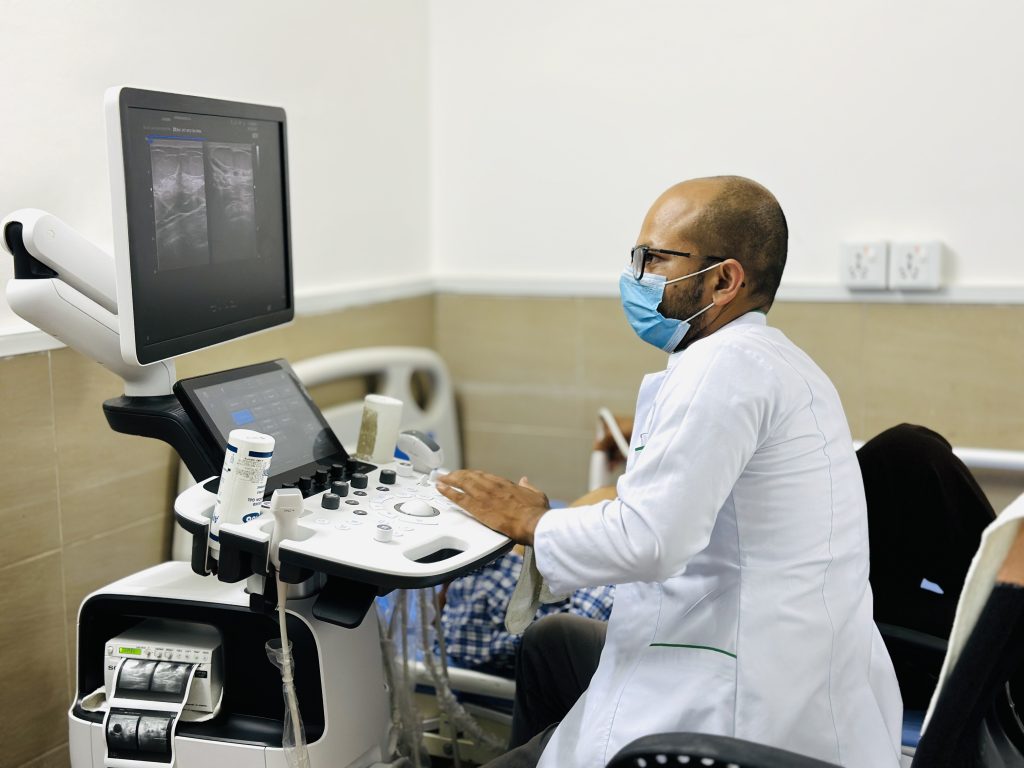
ULTRASOUND

Dr. Milan Silwal
Ultrasound, or ultrasonography, is a medical imaging technique that uses high-frequency sound waves to create images of the inside of the body. It is a non-invasive and safe imaging method that is commonly used for various medical purposes, including diagnostic imaging, monitoring pregnancies, and guiding certain medical procedures. Here are some key aspects of ultrasound:
How Ultrasound Works:
- Generation of Sound Waves:
- Ultrasound machines produce high-frequency sound waves that are beyond the range of human hearing.
- A transducer, which is a handheld device, is used to emit these sound waves into the body.
- Reflection of Sound Waves:
- When the sound waves encounter different tissues or structures inside the body, some of the waves are reflected back to the transducer.
- Image Formation:
- The reflected waves are converted into electrical signals, and a computer processes these signals to create real-time images on a monitor.
Common Uses of Ultrasound:
- Diagnostic Imaging:
- Ultrasound is commonly used to visualize organs and structures in the abdomen, pelvis, and other parts of the body.
- It is frequently used for imaging the liver, gallbladder, kidneys, pancreas, and reproductive organs.
- Obstetric Ultrasound:
- Ultrasound is widely used during pregnancy to monitor fetal development, check for abnormalities, and determine the baby’s gender.
- Different types of obstetric ultrasounds include dating scans, anatomy scans, and fetal echocardiography.
- Cardiac Ultrasound (Echocardiography):
- This type of ultrasound is used to visualize the heart and its functioning, helping diagnose heart conditions and assess blood flow.
- Musculoskeletal Ultrasound:
- It is used to examine muscles, tendons, ligaments, and joints, helping diagnose conditions such as sprains, tears, or inflammation.
- Vascular Ultrasound:
- Used to assess blood flow and detect abnormalities in blood vessels, including carotid arteries, veins, and arteries in the extremities.
- Breast Ultrasound:
- Often used as a supplementary imaging tool, especially when a lump is detected during a breast examination or mammogram.
Advantages of Ultrasound:
- Non-Invasive: Ultrasound does not involve radiation and is considered safe for both adults and developing fetuses during pregnancy.
- Real-Time Imaging: Ultrasound provides real-time images, allowing healthcare providers to observe movement and changes as they occur.
- Portable: Ultrasound machines come in various sizes, including portable devices, making them versatile and accessible in different healthcare settings.
- Cost-Effective: Compared to some other imaging techniques, ultrasound is generally more cost-effective.
It’s important to note that while ultrasound is valuable for many diagnostic purposes, it may not be the ideal imaging modality for all conditions, and healthcare providers may use a combination of imaging techniques based on the clinical situation.